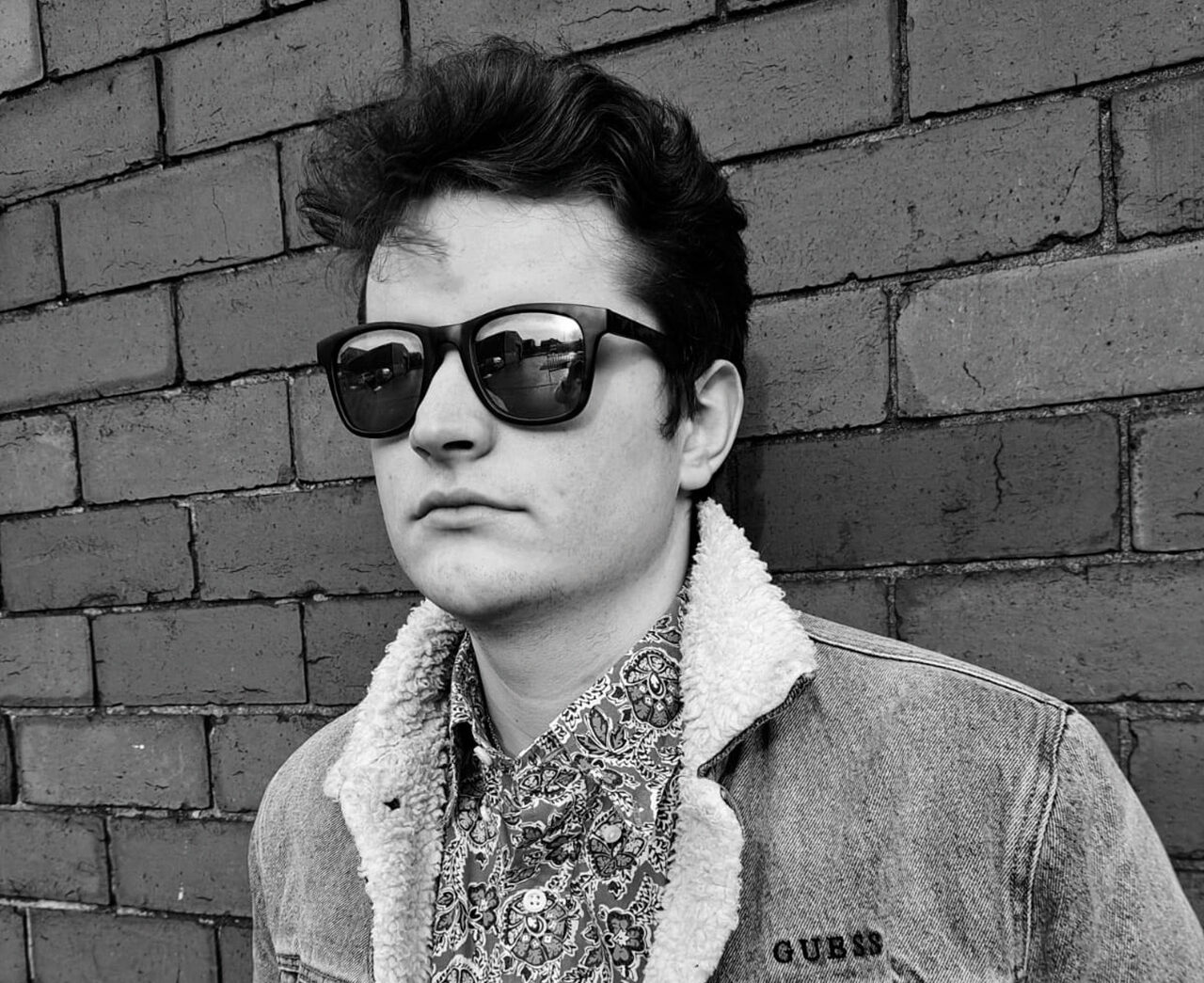String theory
A promising young student at Leeds Conservatoire, Sean Harrington on why music is in his blood, and about the challenges of being a blind musician
From a musical family with Irish roots, Heckmondwike singer-songwriter Sean Harrington played the bodhrán in the junior ceilidh band at Leeds Irish Centre, so it’s no surprise his music developed into a rhythm based, acoustic blues that’s all heart. The 21 year old, currently studying at Leeds Conservatoire, says his earliest memories include his mother’s beautiful singing.
Harrington wishes more families encouraged singing. “That’s how I learned guitar, singing along,” he says. Godfather Frank introduced him to the bodhrán. Grandad Tom got him piano lessons but playing music didn’t stick until he got hold of his auntie Siobhan’s old guitar – which he loved learning.
“Bash ‘em out, sing along – that’s something you fall in love with. I’ve three older brothers and we’ve all had music lessons, but they played for a while and abandoned it.”
Sean’s music is on Facebook, Instagram and YouTube, but he says: “Obviously, I’m no good with pictures. My godfather organises my social media. I have to rely on others so much.”
Harrington lost his sight to a rare form of cancer at the age of three. Bilateral retinoblastoma is a gene defect that occurs in young children.
Harrington’s parents, Brian and Victoria, had difficult decisions to make about their youngest son, who they took for investigations after noticing a squint. Surviving the condition is typically at the expense of the child’s sight.
“I treasure memories of things I’ve seen, like my mum’s face, which sadly are fading. I’ve forgotten what yellow looks like. To perceive colour again would be great – things are sort of slipping away bit by bit.”
Harrington went to a school for the blind. There were advantages to a small, specialist school, but it wasn’t easy to learn about the sighted world, so it was an adjustment starting college just before the pandemic hit. It took a while to make friends.
“When you’re in a new place, it’s difficult. I was self-conscious, and the pandemic didn’t help socialising.”
Fellow student and musical collaborator Ed Cooke – a “brilliant pianist” and “very good friend” – was a big help during lockdowns.
“I get support at college, but recording is difficult as a blind person, and navigating the college software and websites, you can get thrown into random bits of the internet. Everything takes longer. Even in braille it takes longer,” Harrington says.
He got into playing music in front of people through blues jams, playing his first open mic at 16. Within a year he was good enough to start gigging. At 17 he jammed at Blues Kitchen in Camden.
“The challenging thing about a jam is playing with complete strangers. But with the right musicians, you work it out and it turns into a beautiful thing.”
Harrington’s guitar style is percussive and he wears a bracelet around his wrist for hand slaps.
“With this metal part, you hit the body of the guitar,” he explains, adding that blues music is rhythm and structure. “If it’s a 12-bar blues, you don’t need sheet music, you just feel it. There’s heart to it, guts and heart and pain that can get lost in other music forms.”
He is inspired by blues guitarists like Robert Johnson. “Blues and soul, Howling Wolf, Nina Simone, Ray Charles, Stevie Wonder – it’s the music genre for blind people that’s been the most successful.”

Leave a reply
Your email address will not be published.